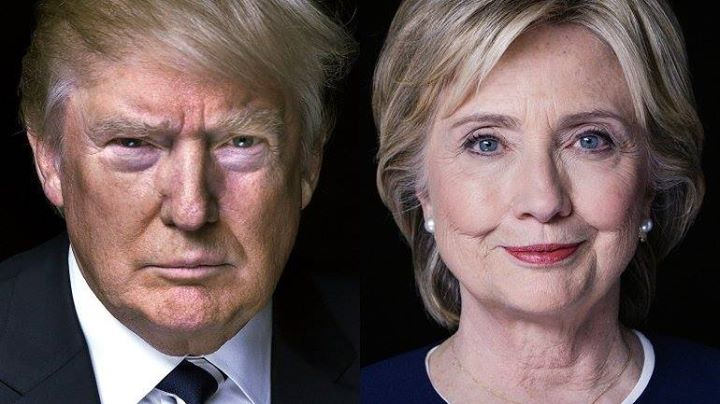
Will Congress Unravel the Trans-Pacific Partnership?
How will election-year politics play into the TPP’s future? What steps can supporters of the accord take to help secure passage?
This article is also available in Spanish
Since the turn of the century, perhaps earlier, there has been a consistent distancing between the U.S. and Latin America. Today it is difficult, perhaps even fanciful, to talk about U.S. policy toward the region as a whole; region-wide policies are mostly a thing of the past. During the Cold War, the U.S. had a security strategy focused on keeping the Soviet Union out of Latin America, discouraging the emergence of communist or even leftist governments, and sometimes working to overthrow them. The war on drugs was a modest addition to the strategy.
Following the collapse of the Soviet Union and the return of elected governments across Latin America, President George H.W. Bush proposed a new regional agenda, calling for a common effort to build a more integrated and cooperative hemisphere. The agenda included negotiating a hemisphere-wide free trade agreement, reinforcing the collective defense of democracy and human rights, and bolstering inter-American institutions. Each of these initiatives, however, fell far short of their goals.
More recently, Presidents George W. Bush and Barack Obama have had to contend with the emergence of small, but virulent anti-American bloc of countries led by former Venezuelan President Hugo Chavez, who made ample use of windfall oil earnings to curb U.S. influence in the region. Most Latin American nations sought cordial relations with Washington, but they also maintained friendly, supportive ties with the increasingly wealthy and powerful Venezuela.
The massive expansion of Latin America’s economic relations with China, now the leading trade and financing partner of about half of South America’s countries, has produced an important shift in the region’s outlook and international priorities—as it has throughout the world. The region now has many more alternatives for foreign commercial and financial ties than ever before.
Latin America today, despite the widespread recognition of the potential benefits of greater regional integration, remains more fragmented than ever. Although the winds may be shifting toward the center, ideological and political differences are at the heart of the divisions between liberal democracies and autocratic states, between populist, state-directed economies and those that are largely market-driven, and between allies and partners of the U.S. and openly hostile nations.
Recent changes in Latin America clearly point to a more centrist, more conservative period in Latin America, which could well facilitate easier relations with the U.S., although not necessarily more productive or cooperative ones. The region’s economic slowdown over the past five years, after a decade of prosperity, dealt a sharp blow to the Latin America’s majority leftist governments. This past year, elections in Argentina and Peru brought business oriented governments to power, although by tiny margins. The impeachment of Brazilian President Dilma Rousseff has put a center-right coalition in power in Brazil, which will probably win the 2018 presidential election over the now crippled Workers’ Party. The conservative right is expected to win next year’s presidential race in Chile. And Venezuela’s Chavista government, in the midst of an economic and governance crisis, could fall at any time. Still, it is early to proclaim a clear, enduring trend rightward. A number of more centrist governments, in Mexico and Costa Rica, for example, are suffering record low approval ratings.
The November election results will shape the content, style and tone of U.S. engagement with Latin America. Hillary Clinton will stick closely to the policies of the Obama years, which she helped design. Donald Trump’s approach to region is wholly unpredictable at this point, like much else about his White House plans.
Regardless of who wins, however, Latin America will almost surely not be a U.S. priority. The U.S. faces no urgent threats or challenges in the region, nor any special opportunities. Nor will the U.S. focus much on regional integration. The region itself will remain divided on many dimensions, and U.S. policy will mainly focus on bilateral relationships.
Should she triumph, Clinton is committed to forcefully address immigration issues. But the failures of Presidents Bush and Obama to make any headway toward legislative solutions suggest that a Clinton initiative would likely also be stymied in Congress – even in the unlikely case the Democrats were to claim both houses. Like Obama, she would then seek some more limited reforms and protections for refugees, asylum seekers, and undocumented residents through executive orders.
On a second hot button issue, trade policy, Clinton felt forced to retreat during the campaign—so no major trade deals, and certainly not the Trans-Pacific Partnership, should be expected.
Clinton’s most important challenge in the region will be managing the U.S. relationship with a troubled Mexico, which accounts for a substantial majority of all U.S.-Latin America trade and is closely integrated with the U.S., economically and demographically. By revealing a powerful anti-Mexican bias among many Americans, the current electoral campaign could make that task much harder. Other key challenge will include the perennial, tragic, and unchanging situation of Haiti’s impoverished and misgoverned 10 million people, and the expanding plague of drugs and violence across much of Central America, leading to the flight of impoverished and threatened families to the U.S.
Another U.S. priority will be continuing assistance to Colombia for administering its peace agreements with the FARC and other guerrilla forces, while reintegrating millions of displaced persons and avoiding a surge of narcotics trafficking and other criminal activity. Venezuela will remain a hard-to-address dilemma for U.S. policy, particularly if the country plunges into an humanitarian and governance crisis or armed conflict breaks out. Major attention needs also to be paid to the new governments of Brazil and Argentina, as they seek to revive their national economies and restore stronger ties with the U.S.
The U.S. policy that will undoubtedly get the greatest public visibility is the Obama-initiated reconciliation with Cuba, which a Clinton administration will likely administer almost seamlessly. The new policy has generated support at home, including among Cuban Americans, and has been widely applauded across Latin America. It assures Obama of a favorable legacy in the region.
How will election-year politics play into the TPP’s future? What steps can supporters of the accord take to help secure passage?
Presidente emérito do Inter-American Dialogue, Peter Hakim diz que maioria republicana sabe que Hillary é provável vencedora.
Michael Shifter fue entrevistado por Gerardo Torres de El Salvador sobre los temas más destacados en la agenda regional. Entre otros asuntos, Shifter habló sobre el futuro de la paz en Colombia, la crisis política y económica en Venezuela, y el impacto de las elecciones de Estados Unidos en la región.
 Richard Girard / Flickr / CC BY-SA 2.0
Richard Girard / Flickr / CC BY-SA 2.0

